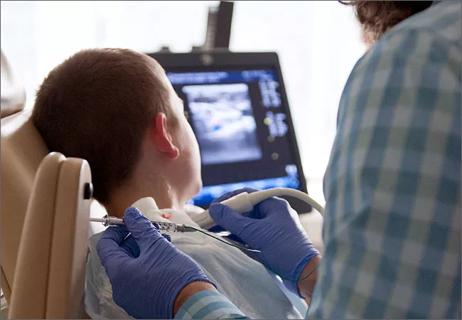Leaders of the Pediatric Cancer Committee discuss new accreditation

Cleveland Clinic Children's recently became the first children's hospital to receive a newly developed accreditation from the American College of Surgeons (ACS) Commission on Cancer (CoC), designed specifically for pediatric cancer programs. This new accreditation, referred to as CoC-PC, was developed to acknowledge the unique and specialized care needed for pediatric cancer patients, reflecting a growing understanding in the cancer community.
Advertisement
Cleveland Clinic is a non-profit academic medical center. Advertising on our site helps support our mission. We do not endorse non-Cleveland Clinic products or services. Policy
As the first center to receive the designation, the Cleveland Clinic Pediatric Cancer Committee also worked closely with the site reviewers to help establish standards and best practices to guide the process for future center applicants.
With the 2023 accreditation in the rearview mirror, Matteo Trucco, MD, a pediatric hematologist/oncologist, and Jessica Preyss, program manager at Cleveland Clinic Children's, both leads on the initiative, reflected on the process in a conversation with Consult QD. Their responses are captured below in excerpts that have been edited for length and clarity.
JP: Children with cancer often have unique care needs. This accreditation recognizes these services within a larger cancer program and demonstrates support for advancing quality care for this patient population. Hospitals with a CoC designation are eligible to apply, and it's on a three-year cycle.
Our pediatric cancer program was evaluated on 17 standards, including the following areas: multidisciplinary cancer case conference, genetic counseling, rehabilitation care services, oncology nutrition services, survivorship program, pathology reporting, community outreach-addressing barriers to care, clinical research, monitoring evidence-based guidelines as well as the establishment and monitoring of a multidisciplinary peds cancer committee.
We were also evaluated on a flagship cancer-specific quality improvement project, which changes yearly and requires centers to identify a problem and implement a measurable solution.
Advertisement
JP: Sure. One of our projects, which was implemented in 2023, was to increase value-added time in the Pediatric Hematology/Oncology and Bone Marrow Transplant Clinic by 20%. The team mapped the mean and median times from check-in to provider in the room and all the activities that happen in between.
Our interventions included creating an expectation across providers that the goal is a 10-minute arrival-to-room time, refreshing the process involved with hematology patient check-in, and improving the wait time from rooming to provider in-room. Though we saw great improvements, we are still working to improve delays related to obtaining lab work and other provider specific delays.
MT: The CoC-PC designation recognizes nuances within the pediatric cancer community, reflecting a growing awareness about the differences in these patient populations in recent years.
Take clinical trials, for example. In adult cancer, maybe 1% or 2% of eligible patients enroll in a clinical trial. But there are so many more adult cancer patients, that that's all you need. In pediatrics, it's flipped around. There are fewer patients, but most who are eligible for a trial will enroll in one. The standard is that we want at least 50% of eligible patients enrolled in a clinical trial, although we were excited to report that we had closer to 70%.
Treatment is another example. Brain cancer is managed differently in children versus adults, so the metrics by which we are evaluating consistent quality care in adults will, understandably, be different in our pediatric population. The accreditation takes that into account.
Advertisement
MT: Collaboration is essential. We relied on a large, multidisciplinary team to make this possible: not just medical oncologists but surgeons, radiation oncologists, radiologists, pathologists, rehab specialists and social workers. Everyone contributes, and that's incredibly important for a successful outcome.
Documentation leads to improvements. When you document what you are doing, even if you are already doing it, you might be surprised to find more opportunities to collaborate and improve processes. In tumor board, for example, specialists like surgical and radiation oncologists are typically present in most cases, but they might not always be able to attend. Acknowledgement of this led to a new coverage-related approach.
Establish a project framework. Our team meets quarterly to review expectations and data on clinical programs, ongoing quality projects, and one department-wide annual quality improvement project. This streamlines the process so that we can provide a comprehensive overview of three years’ worth of documentation and quality improvement work.
Advertisement
Advertisement

Case-control study yields evidence of epigenetic aging in pediatric-onset MS

6 objective measures to assess pain and evaluate progress

Relapse rates were lower with oral or infusion therapy after initial injectable DMT

Evidence, clinical considerations, and why more research is still needed

Multidisciplinary team coordinates, adds efficiencies to care

Complex disease requires a comprehensive approach

Surprising X-ray results explain a snoring sound heard during breathing

Self-efficacy mindset, burst therapy and increased biofeedback may help improve outcomes